Alternative names Ox bone soup Serving temperature Warm | Type Tang Place of origin Korea | |
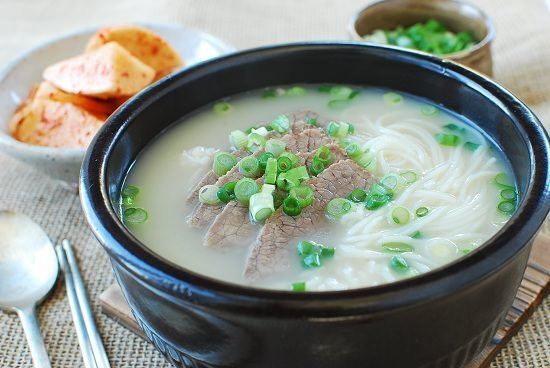 | ||
Similar Gomguk, Galbi‑tang, Haejang‑guk, Yukgaejang, Kkakdugi | ||
Ox bone soup seolleongtang
Seolleongtang (설렁탕) or ox bone soup is a Korean broth tang (soup) made from ox bones (mostly leg bones), brisket and other cuts. Seasoning is generally done at the table according to personal taste by adding salt, ground black pepper, red pepper, minced garlic, or chopped spring onions. It is a local dish of Seoul.
Contents
- Ox bone soup seolleongtang
- How to make korean bone broth soup seolleongtang
- History and etymology
- References
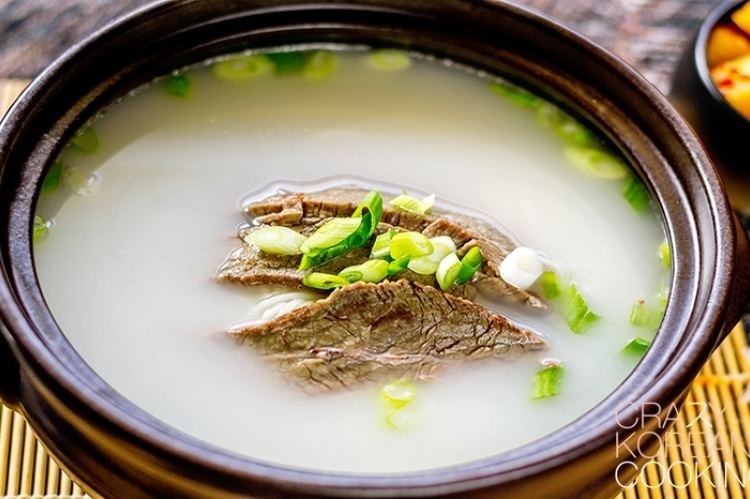
Seolleongtang is typically simmered over a low flame over a period of several hours to an entire day, to allow the flavor to be gradually extracted from the bones. It has a milky off-white, cloudy appearance and is normally eaten together with rice and several side dishes; the rice is sometimes added directly to the soup.
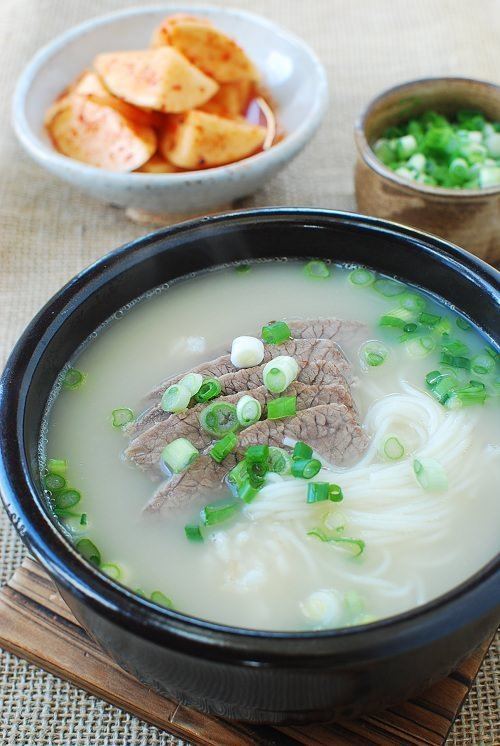
How to make korean bone broth soup seolleongtang
History and etymology
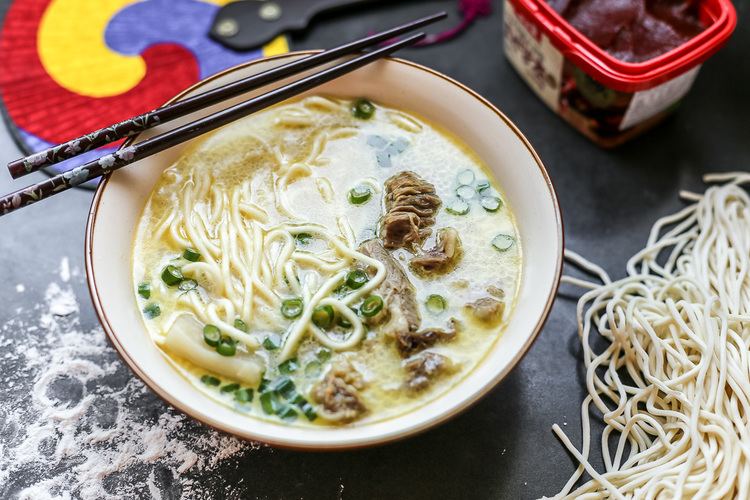
In the Joseon dynasty, Koreans regularly made nationwide sacrifices to their ancestors, such as Dangun (the legendary founder of the kingdom of Gojoseon). The nationwide sacrifice was called Sŏnnongje (hangul: 선농제; hanja: 先農祭, Sŏnnong meaning "venerated farmer"), and the altar for the sacrifice was called Sŏnnong dan (hangul: 선농단; hanja: 先農壇), which dates back to the Silla Dynasty.
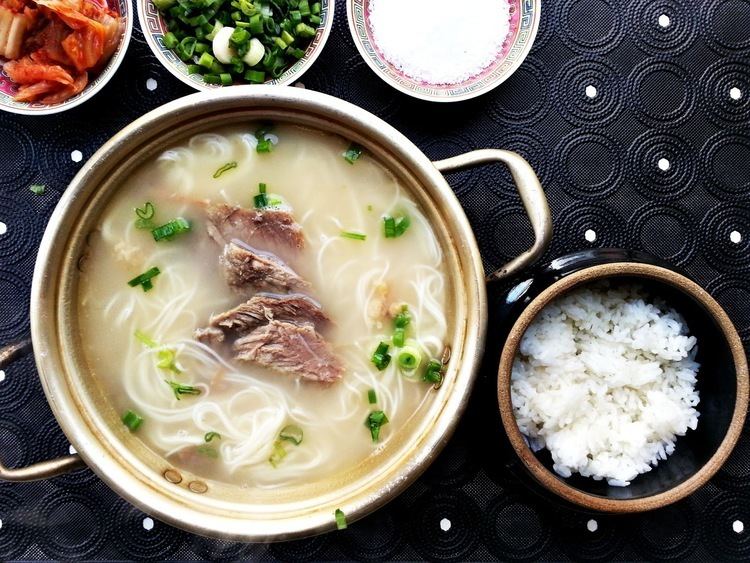
King Sŏngjong had visited the sacrifice himself, and had eaten a meal with the people of Josŏn. In order to increase the food supply in Josŏn, King Sŏngjong ordered them to invent dishes that could feed the maximum number of people using the least amount of ingredients, and seonnongtang (tang meaning "soup") was one of these.
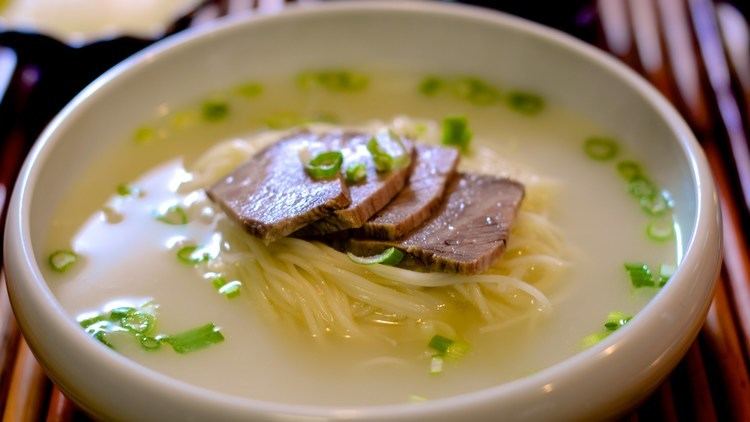
There is another historical opinion preceding Joseon dynasty concerning the origin of seolleongtang. According to this, the food was originated by the Mongolian invasion of Koryo in 13C. Mongolian food "Sulen" is sliced and boiled beef with green onions, which developed into seolleongtang in Korea.
Seonnongtang is now called seolleongtang for easier pronunciation. The phonetic values have changed as follows:
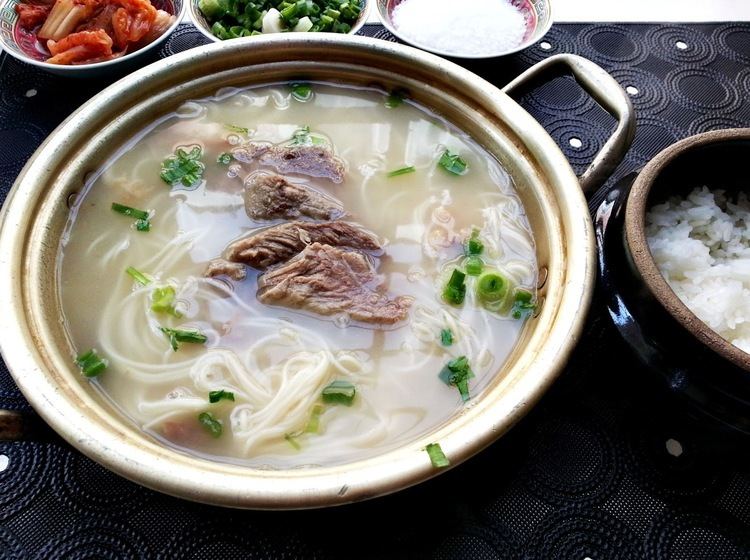
The first change is a consonant liquidization making the two "N" sounds into softer "L" sounds for easy pronunciation. The second change is a vowel harmonization of the "O" sound affected by the "Ŏ" sound.
Among common mis-beliefs related to the dish, the name may come from its snowy white color and hearty taste, so seolleongtang was named "雪濃湯" in hanja (literally "snowy thick soup"). Therefore, several Korean dictionaries say that the hanja spelling such as 雪濃湯 is an incorrect usage for the dish. Nevertheless, the misspelling is used to refer to the soup in hanja.
